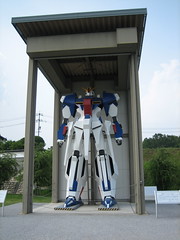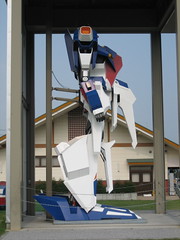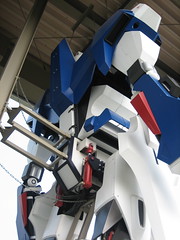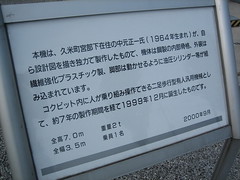Since Roy and I seem to be trading rather interesting posts on language (here, here, and here), here’s another great Japanese word that I just happened upon and happen find amusing. It’s also an example of how as words become transplants from one language to another, they often undergo slight changes in meaning or nuance.
From today’s Asahi online edition:
2005年08月10日22時29分
9日の大リーグ、ヤンキース―ホワイトソックスでファンが観客席から転落するハプニングがあった。
I’ll be nice this time and spell it out, but it says: Kokonoka no dai ri-gu, yanki-zu- howaitosokkusu de fan ga kankyakuseki kara tennraku suru hapuningu ga atta.
I’m not quite sure how to translate that literally using the actual word “happening” as it is used in the original Japanese without adding additional, implied information. I guess it would read something like this: “At Tuesday’s Yankees – White Sox game there was a happening (where a fan) fell from (his) seat.”
The reason I find this word so amusing is that the word happening is overwhelmingly used in English as a verb, not as a noun – though it also occasionally shows up as an adjective. Nevertheless, it somehow managed to make the jump to Japanese as a noun and has survived. I tried to think of common usages as a noun in English, and the best I could come up with is “fortuitous happening.” A few fruitless Google searches later, I gave up and just turned to the The Columbia Guide to Standard American English, which had this to say:
A happening is an event, especially a noteworthy or dramatic one, or one staged deliberately for theatrical effect, as in Her parties were always planned to be happenings, intended to be talked about for weeks afterwards. The word is Standard.
Being very unscientific about this inquiry, I feel that using happening as a noun has always had a slightly antiquated feel to it. It’s the type of word that I might expect to hear a Brit use with regularity, but one that just somehow sounds a bit odd coming from the mouth of an American too often.
In Japanese, happening is used only as a noun (although there is an entry in 英辞朗 of the noun ハプン but I’ve never heard or seen this word used before) and refers to an unexpected or surprising event – like some kid falling out of his seat into the safety net at a Yanks-White Sox game. Here’s the definition as provided by goo 辞書:
ハプニング 1 [happening]
(1)思いがけない出来事。偶発的な事件。
「―が生じる」(2)予想外の、意表をついた出来事の表現効果を積極的に追求する演劇・絵画などにおける前衛的芸術活動。
Coincidentally, while reading up on Japan’s September 11th general election, I happened across ハプニング once again, which I could only call a fortuitous happening. On May 19, 1980, then Prime Minister Ohira dissolved the lower house and called for elections. The name of the dissolution?







